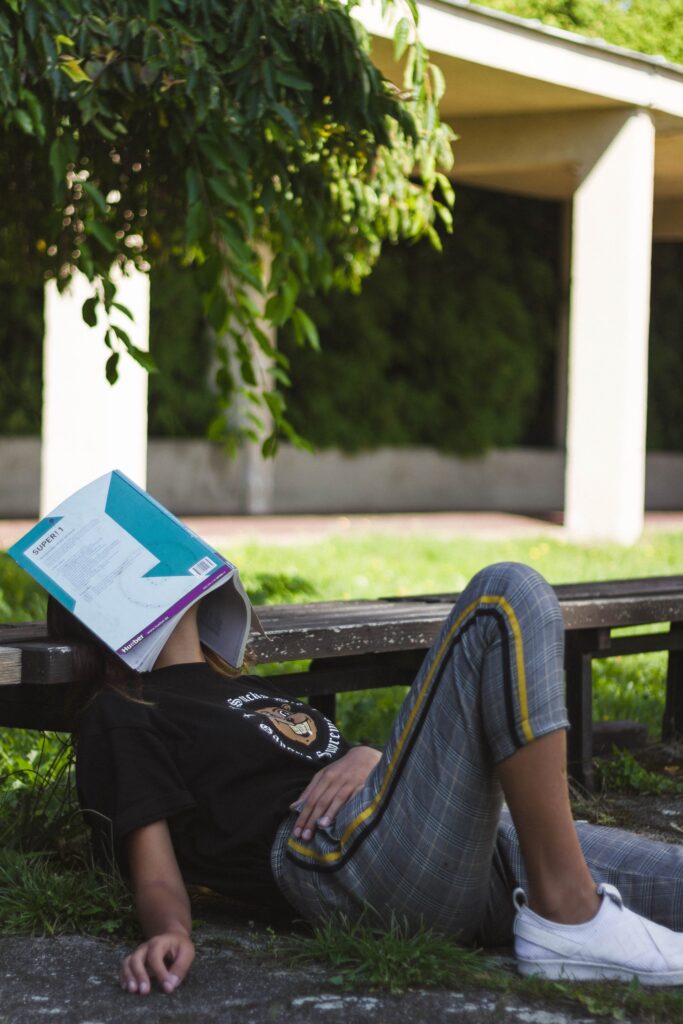This has been a year like no other, and this summer teachers need to first take care of themselves and then prepare for next year. This is the first of a series of posts about how to plan for SEL and PBL as we hopefully return to face-to-face learning next year. We will begin with the immediate pressing need-take a break!
Rest
Most teachers in the United States are on summer break. Some of you have been out of school for a month or longer. For me, the school year ended a week ago but I have been busy with workshops so this feels like my first chance to catch my breath.
First let me say congratulations on this past year! You made it through Covid! Whether that meant social distancing, hybrid, virtual, or most likely a combination of all of them, you survived. You tried projects, connected with kids, and focused on SEL. I am sure there were many moments when you doubted yourself and your value as a teacher but you gave it your all so give yourself a pat on the back.
Now it’s time for some downtime to recharge. I blog a ton about SEL, but Social and Emotional Learning starts with the teacher. If you want to be your best in the fall then you need to take care of your own SEL needs now. Taking a break means different things to different people. For me, I like to be active physically but free from mental stress of deadlines. I have been spending time with family, enjoying the outdoors, exercising, landscaping my yard, reading fiction, watching baseball and doing puzzles. Please take the time to find whatever relaxes you whether it is a hobby, playing games, movies, house projects, travel, or cooking. It’s also a great time to just sleep. Don’t do anything. Lay in the sun. Relax by a campfire. Hang out with friends and family. There is no wrong way to rest as long as it works for you.
Mental Break
Early in my teaching career I needed supplemental income to pay my bills. Before I became a teacher I worked in concrete construction so it was a natural fit to grab my trowel every summer. My main motivation was extra money, but I soon realized a side benefit. Working construction actually helped me detox any stress from the school year. Finishing concrete is not relaxing. It can be back-breaking physical labor. But the change of pace was therapeutic: hard labor for my body, but free of the mental stress of teaching.
I would compare running a trowel machine to mowing the lawn (my favorite chore). You are busy, working in a pattern, but your mind is free to wander. There is something restorative about working your body while clearing your mind. By the end of the summer, I was physically tired, but mentally fresh and ready to engage a new group of students. This reminds me that I spent too much time sitting in Zoom this year and need to be more active. Now is a great time to start healthy habits.
For some of us, rest may not be adequate. I like the continuum that John Spencer created. Do you need rest, recovery, restoration, or rehabilitation? Rest may not be adequate for the trauma you experienced this year. Honestly evaluate if you need more serious mental help this summer. Intentionally take care of yourself.
If you need to rest all summer and never make it to the next steps in this blog series then that’s what you need to do.
There should be no shame or guilt if you take the entire summer to recuperate with your family. You are not being paid for this time, and you are under no obligation to plan for next year. Everyone of us needs to determine for ourselves what we need this summer and do it. No excuses or apologies needed.
So quit reading education blogs and take some time off! Next week we will talk about reflection…
Interested in how you can create a positive culture by developing SEL skills integrated in your classroom? Check out my virtual workshops this summer! I am also booking workshops with schools across the country on PBL and SEL.


